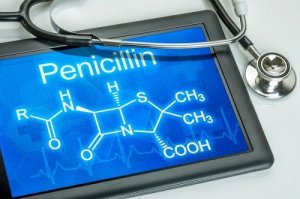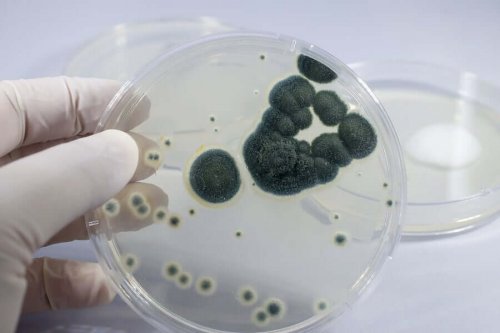Penicillin and its Uses

Penicillin is an antibiotic drug derived from the fungus Penicillium. This great discovery in the world of medicine is attributed to Alexander Fleming, a Scottish bacteriologist. He discovered penicillin in 1928. However, experts only managed to produce it in bulk 10 years later. Those responsible for this task were, among other professionals, biochemist Ernst Boris Chain and pathologist Howard Florey.
Penicillin is an antibiotic that belongs to the family of beta-lactams (β-lactams). This antibiotic has a broad spectrum of action and is effective against many different bacteria, such as pneumococci, streptococci, Clostridium tetani (that trigger tetanus), and meningococcus, among others.
We say that it was an amazing discovery in the world of medicine because, when it was discovered, it helped eradicate several diseases that proved deadly for patients of that era. These included sepsis, gonorrhea, and even scarlet fever.
However, medical professionals have considerably abused the administration of both penicillin and the synthetic and semisynthetic derivatives that have been discovered over time. As a result, bacteria have been becoming resistant to these antibiotics. This is a serious global health problem. Today, experts continue to investigate new mechanisms of action and therapeutic alternatives to fight these resistant bacteria.
What are beta-lactam antibiotics?

In general, this type of antibiotics is narrow-spectrum, as they’re only effective against gram-positive bacteria and kill bacteria. (However, penicillin is broad-spectrum).
These drugs are administered orally and parenterally. Also, they’re very safe because the possible side effects are limited to hypersensitivity reactions. However, these reactions have to be controlled, as they can cause anaphylactic shock. Moreover, although they can cross the placental barrier, doctors can indicate them to pregnant women due to the good safety profile they have demonstrated in clinical trials.
Overall, these antibiotics have many uses.
Types of beta-lactam antibiotics
Among the groups that make up this family of antibiotics, we can find:
- Penicillin,
- Cephalosporin,
- Monobactams, which fight gram-negative bacteria,
- Carbapenem.
Mechanism of action: How does penicillin work in the body?
Penicillin is a drug that kills and inhibits bacterial growth. For this reason, experts consider it a bactericidal drug. However, it can only kill microorganisms that are growing and multiplying, not those that are dormant.
Moreover, and as we mentioned above, penicillin belongs to the group of β-lactam antibiotics. This family of drugs inhibits the synthesis of bacterial cell wall structure, which is essential for the life of bacteria, to kill these microorganisms.
To this end, it inhibits the transpeptidation process and, ultimately, prevents peptidoglycan synthesis. Overall, the antibiotic must penetrate inside the cell and, once there, bind to the proteins of penicillins.
You should also read: Broad-Spectrum Antibiotics
Adverse reactions: penicillin allergy

Although penicillin is relatively safe, it can cause several side effects. Among them, there’s hypersensitivity or an allergy to penicillin. Although this is the most significant side effect, the severity varies from patient to patient. The symptoms include:
- Episodic skin rashes,
- Urticaria,
- Anaphylactic shock.
Other reactions that this drug can trigger are gastrointestinal disorders, such as diarrhea, nausea, and vomiting, and additional infections, such as candidiasis.
Discover: Antibiotics: Some of the Inherent Risks
Conclusion
The discovery of penicillin was a breakthrough in medicine. This medication has helped eradicate many of the deadly diseases of the time.
However, the abuse of this drug, as well as other discoveries, has led to the development of antibiotic resistance. Thus, these antibiotics have significantly lost their effectiveness. Therefore, there’s a need for new antibiotics.
All cited sources were thoroughly reviewed by our team to ensure their quality, reliability, currency, and validity. The bibliography of this article was considered reliable and of academic or scientific accuracy.
- Ligon, B. L. (2004). Penicillin: Its Discovery and Early Development. Seminars in Pediatric Infectious Diseases, 15(1), 52–57. https://doi.org/10.1053/j.spid.2004.02.001
- Kardos, N., & Demain, A. L. (2011, November). Penicillin: The medicine with the greatest impact on therapeutic outcomes. Applied Microbiology and Biotechnology. https://doi.org/10.1007/s00253-011-3587-6
- Lobanovska, M., & Pilla, G. (2017). Penicillin’s discovery and antibiotic resistance: Lessons for the future? Yale Journal of Biology and Medicine, 90(1), 135–145.
- Gaynes, R. (2017). The discovery of penicillin—new insights after more than 75 years of clinical use. Emerging Infectious Diseases, 23(5), 849–853. https://doi.org/10.3201/eid2305.161556
- Macy, E. (2018). Penicillins. In Drug Allergy Testing (pp. 103–113). Elsevier Inc. https://doi.org/10.1016/B978-0-323-48551-7.00010-9
This text is provided for informational purposes only and does not replace consultation with a professional. If in doubt, consult your specialist.








